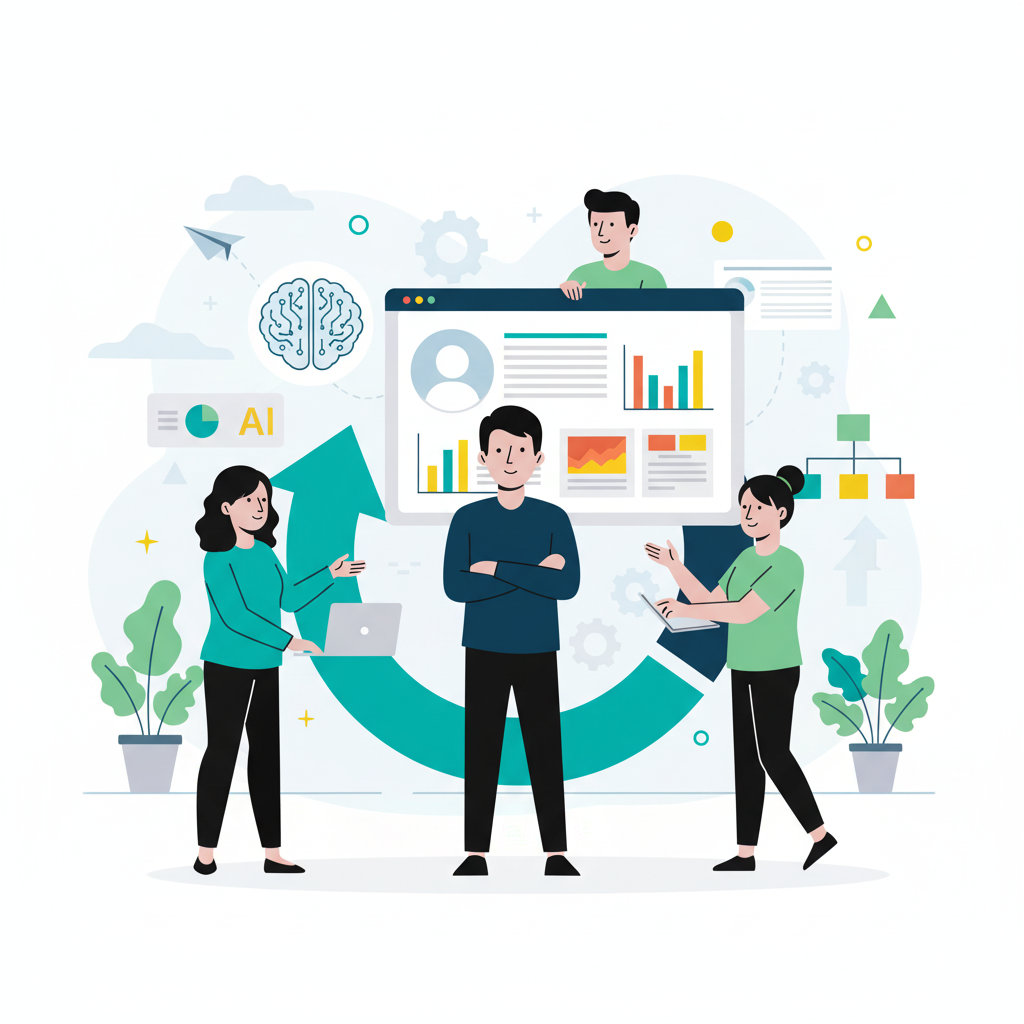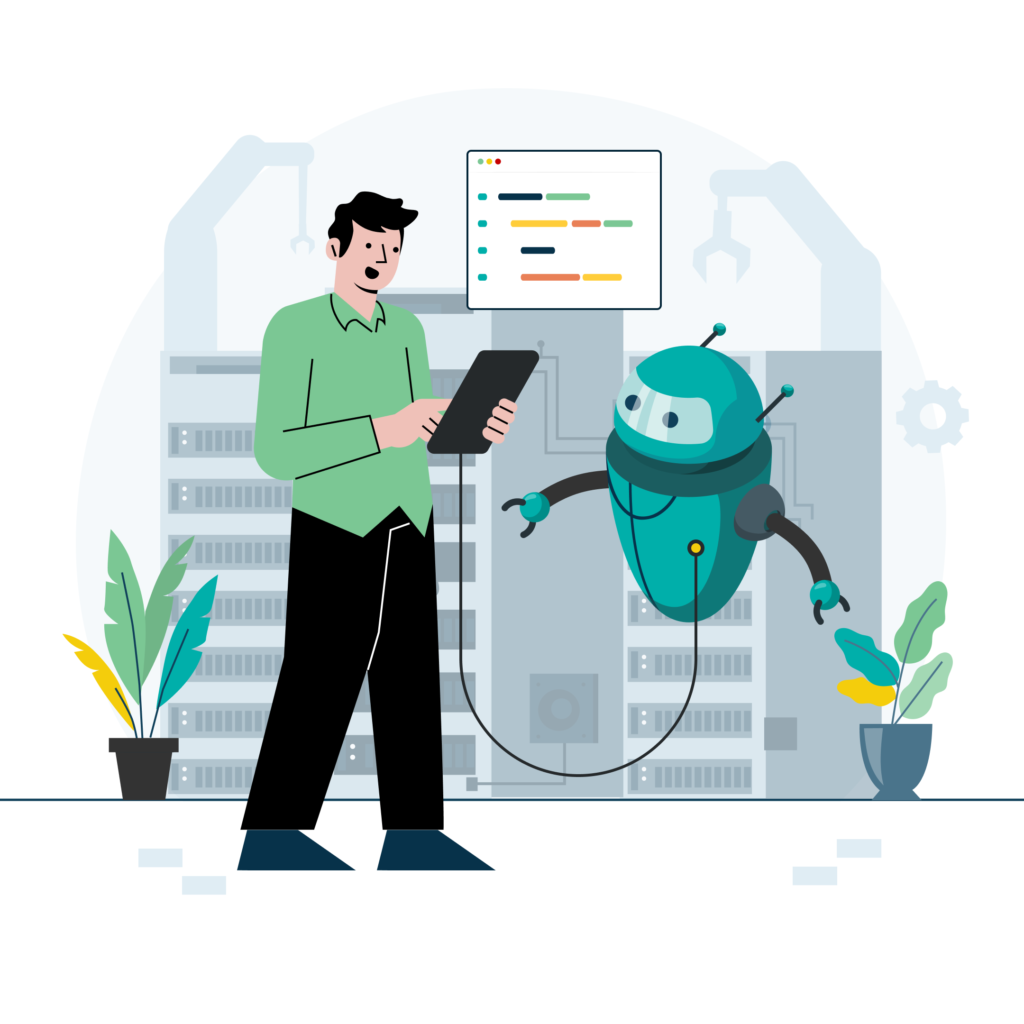You’ve spent years getting comfortable with databases, APIs, and deployment pipelines. You can debug like a wizard and architect systems that actually work. But now your company wants you to lead an AI transformation. And suddenly you’re dealing with team dynamics, resistance to change, and all sorts of people problems that your programming skills can’t solve.
Here’s the thing: AI has replaced digital transformation as the top CEO priority, but only 1% of enterprises have actually pulled off full AI integration. The code part? That’s the easy bit. Getting your team on board, managing pushback, and building a culture where people actually want to use data to make decisions – that’s the real challenge.
This guide is part of our Building Smart Data Ecosystems for AI series. We’re going to bridge your tech expertise with change management tactics that actually work for AI projects. You’ll get practical strategies for sizing up your team, designing training that sticks, and tracking progress while you develop the leadership chops to shepherd your developers through this transformation.
What does leading an AI data transformation actually involve?
It’s a mixed bag. You’re juggling technical system overhauls, upskilling your team, redesigning processes, and shifting the entire culture towards making decisions with data instead of gut feelings. The CTO role is transforming into a cross-functional strategist where your value comes less from coding prowess and more from building resilient, future-ready AI strategies.
Your job description just got a lot bigger. You’re now handling strategic vision, team assessments, change management coordination, and stakeholder communication. This isn’t like traditional software projects because you’re coordinating between data scientists, ML engineers, domain experts, and business stakeholders who all speak different languages.
The components on your plate include data architecture planning, skill gap analysis, training programme rollouts, pilot project management, and success metrics. You need to guide your organisation through upskilling, process changes, and cultural shifts to actually get value from AI.
Success boils down to balancing technical excellence with people leadership. You need change management skills and cross-functional team coordination abilities. Make sure you establish clear policies for model usage, data access, and agent autonomy as key governance factors.
How do you transition to leading AI transformation teams?
The shift means developing competencies in people management, strategic thinking, and change leadership while keeping your technical credibility intact. AI transformation pushes CTOs into new roles: Innovation Architect, AI Ethics Lead, and Business Communicator.
Focus on these skill areas: communication and influence, understanding team psychology, portfolio management, and measuring business impact. Start by mentoring on technical stuff, then gradually take on team coordination. Pick up change management frameworks like ADKAR as you build these capabilities.
Leadership plays a pivotal role in shaping AI adoption within technical teams. When leaders actively support and normalise AI tools, developers are way more likely to actually use them. You need to delegate the technical work and mentor team members to develop their own skills, rather than doing everything yourself.
Watch out for these traps: getting lost in technical details, ignoring people concerns, underestimating how much people hate change, and not communicating enough with stakeholders. Culture doesn’t change by accident – it changes through leadership by example, with empathy, and at scale.
Your winning strategies: build trust through technical expertise, show value through pilot projects, and invest in proper leadership development.
How do you build a data-driven culture in your organisation before implementing AI?
Cultural transformation starts with leadership commitment and clear communication about why making decisions with data beats making them with hunches. As our smart data ecosystem guide explains, cultural transformation starts at the top – leaders must champion AI adoption and show an AI-ready mindset by actually using data for decisions.
Your foundation needs data literacy training, transparent metrics sharing, changes to decision-making processes, and success story communication. Front-line employees and business managers don’t need to understand neural network mathematics, but they should grasp what AI can and can’t do.
Put this into practice by establishing data governance frameworks, running regular data reviews, creating tools that make data accessible, and celebrating data-driven wins. Organisations should assess current data foundations capabilities, key performance indicators (KPIs), and investment to inform their comprehensive data strategy.
Address the cultural barriers: fear of job displacement, resistance to transparency, comfort with intuition-based decisions, and lack of data interpretation skills. Lots of successful companies run AI upskilling programmes to train employees at scale – global firms like Walmart and PwC have built comprehensive academies.
Track your progress by monitoring data usage in decision making, employee engagement with data tools, and business outcome improvements from data-driven decisions.
How do you identify which team members are ready for AI transformation responsibilities?
Use a systematic assessment framework that looks at technical skills, adaptability mindset, learning orientation, and collaboration capabilities. Assess current technical expertise within your organisation and identify employees who could become AI champions – tech-savvy individuals who embrace new tools and can mentor others.
Look for these indicators: curiosity about new technologies, willingness to experiment, comfort with ambiguity, and ability to work across disciplines. Skills to hunt for include programming, linear algebra, probability and statistics, big data technologies, algorithms and frameworks, communication, and problem-solving.
Your assessment methods should include technical skill evaluation, problem-solving scenario testing, learning agility assessment, and peer feedback collection. Red flags: resistance to change, strong preference for predictable work, inability to collaborate effectively, and lack of interest in continuous learning.
Figure out training capacity and learning preferences – some teams thrive with hands-on experimentation while others need structured training programmes. Acquiring AI skills takes years of training, and becoming competent in AI can’t be achieved in just a few months.
Your development approach involves creating individual development plans, providing targeted training opportunities, and establishing mentoring relationships.
How do you design effective training programmes for your developers on AI data management?
Training programme design starts with thorough skills gap assessment and learning objective definition aligned with your business AI transformation goals. AI team training responsibilities include model building, training, and fine-tuning machine learning models using appropriate datasets for predictive analysis.
Core curriculum components include AI fundamentals, data engineering practices, ML operations, ethics and governance, and cross-functional collaboration skills. Training programmes should focus on internal workshops on AI testing concepts and prompt engineering, vendor-provided training on specific AI platforms, and hands-on practice with real application testing scenarios.
Delivery methods should combine hands-on workshops, real project application, external expert sessions, peer learning groups, and online resource access. The old skills were scripting and debugging, but the new skills are writing prompts, reviewing AI suggestions, and managing code at scale.
Success factors include practical application opportunities, progressive skill building, regular feedback loops, and integration with daily work responsibilities. Leadership focus should encourage experimentation and create a learning environment where teams can develop AI testing expertise through practical application.
How do you implement change management processes for AI transformation initiatives?
The ADKAR model gives you a roadmap for managing change. You need Awareness building through communication campaigns, Desire creation via success story sharing, Knowledge transfer through training programmes, Ability development through practice opportunities, and Reinforcement through recognition and support systems.
Apply proven frameworks like the Prosci ADKAR Model to guide people through change, focusing on Awareness, Desire, Knowledge, Ability and Reinforcement. AI transformation unfolds in phases from early assessments to full-scale rollout and beyond, requiring structured change management at each stage.
Communication strategy uses a multi-channel approach including team meetings, documentation, success metrics sharing, and feedback collection mechanisms. Communicate clearly and consistently by explaining the purpose and expected impact of AI using multiple channels and welcoming feedback.
Resistance management involves identifying sources of resistance, addressing concerns through dialogue, providing additional support, and adjusting implementation approach based on feedback. Organisations that actively encourage AI experimentation experience higher adoption success rates.
How do you measure the success of organisational change during AI transformation?
Use a multi-dimensional measurement approach including technical implementation metrics, team capability development indicators, cultural transformation markers, and business impact measurements. Effective measurement goes beyond counting installations and involves monitoring active usage across various intervals – daily, weekly, and monthly.
Leading indicators include training completion rates, pilot project participation, data usage adoption, and team engagement scores. Lagging indicators include project delivery success, business outcome improvements, employee retention, and stakeholder satisfaction.
Dashboards and scorecards give leaders a clear view of progress, enabling healthy team-level competition while maintaining psychological safety. Focus on group metrics rather than individual performance to encourage accountability without fostering mistrust.
Measurement tools include regular surveys, performance dashboards, milestone tracking systems, and qualitative feedback collection. Implementation of data governance practices is needed to address data complexity issues, ensuring high-quality, consistent, and accessible data for AI systems.
How do you balance technical leadership with people management during AI transformation?
Time allocation strategy involves dedicating specific time blocks for technical review, team development activities, strategic planning, and stakeholder communication. CTOs must wear multiple “hats” in the age of AI, going beyond typical duties to include Innovation Architect, AI Ethics Lead, and Business Communicator roles.
Decision-making approach requires maintaining technical oversight while empowering team members, escalating technical decisions appropriately, and focusing on architectural guidance rather than implementation details. Success now depends less on coding expertise and more on shaping resilient, future-ready AI strategy.
Communication adaptation involves technical depth adjustment based on audience, translation between technical and business language, and clear documentation of decisions and rationale. Many CTOs face real-world challenges during implementation that are often cultural as much as they are technical.
Team development combines technical mentoring with career development support, skill gap identification and training coordination, and performance management integration.
Personal development requires continuous learning in both technical and leadership domains, peer network building with other technical leaders, and formal leadership training investment. For a complete framework covering all technical and strategic aspects of this transformation, see our complete AI data ecosystem resource. The shift reflects the growing importance of AI not as a technical curiosity, but as a leadership imperative requiring agile, strategic thinking.
FAQ Section
How long does it typically take to transform a development team for AI readiness?
Timeline varies based on team size, existing skills, and transformation scope, typically 6-18 months for comprehensive readiness including cultural adaptation.
What’s the biggest mistake leaders make when leading AI transformation?
Focusing solely on technical implementation while neglecting people management and change resistance, leading to failed adoption despite technical success.
Should I hire external AI consultants or build internal capabilities?
Hybrid approach works best: use consultants for initial strategy and specialised knowledge transfer while building internal capabilities for long-term sustainability.
How do I overcome resistance to AI adoption in my development team?
Address concerns through transparent communication, provide hands-on learning opportunities, share success stories, and involve resistant team members in pilot projects.
What training programmes should I invest in for my team’s AI skills development?
Combination of AI fundamentals, practical machine learning implementation, data engineering, and ethics training, delivered through workshops, online courses, and real project application.
How do I get buy-in from stakeholders for AI transformation investments?
Present clear ROI projections, start with low-risk pilot projects, demonstrate quick wins, and maintain transparent progress reporting.
What leadership skills do I need to develop to successfully manage AI transformation?
Change management, cross-functional collaboration, strategic communication, team psychology understanding, and ability to balance technical depth with people leadership.
How do I build an AI-first culture in my small tech company?
Start with leadership commitment, establish data-driven decision making processes, provide AI literacy training, and celebrate successful AI implementation wins.
What’s the difference between leading technical projects and leading organisational change?
Technical projects focus on systems and processes; organisational change requires people psychology understanding, cultural transformation, and long-term behavioural modification.
How do I communicate the benefits of AI transformation to my team and stakeholders?
Use specific examples, quantify impact where possible, address concerns directly, and connect AI benefits to individual and organisational goals.
What are the most common challenges leaders face when leading AI transformation in SMBs?
Resource constraints, skill gaps, change resistance, limited AI expertise access, and pressure for quick ROI while managing comprehensive transformation.
How do I assess if my team is ready for AI transformation responsibilities?
Use systematic assessment evaluating technical skills, learning agility, collaboration ability, and change adaptability through practical scenarios and peer feedback.












